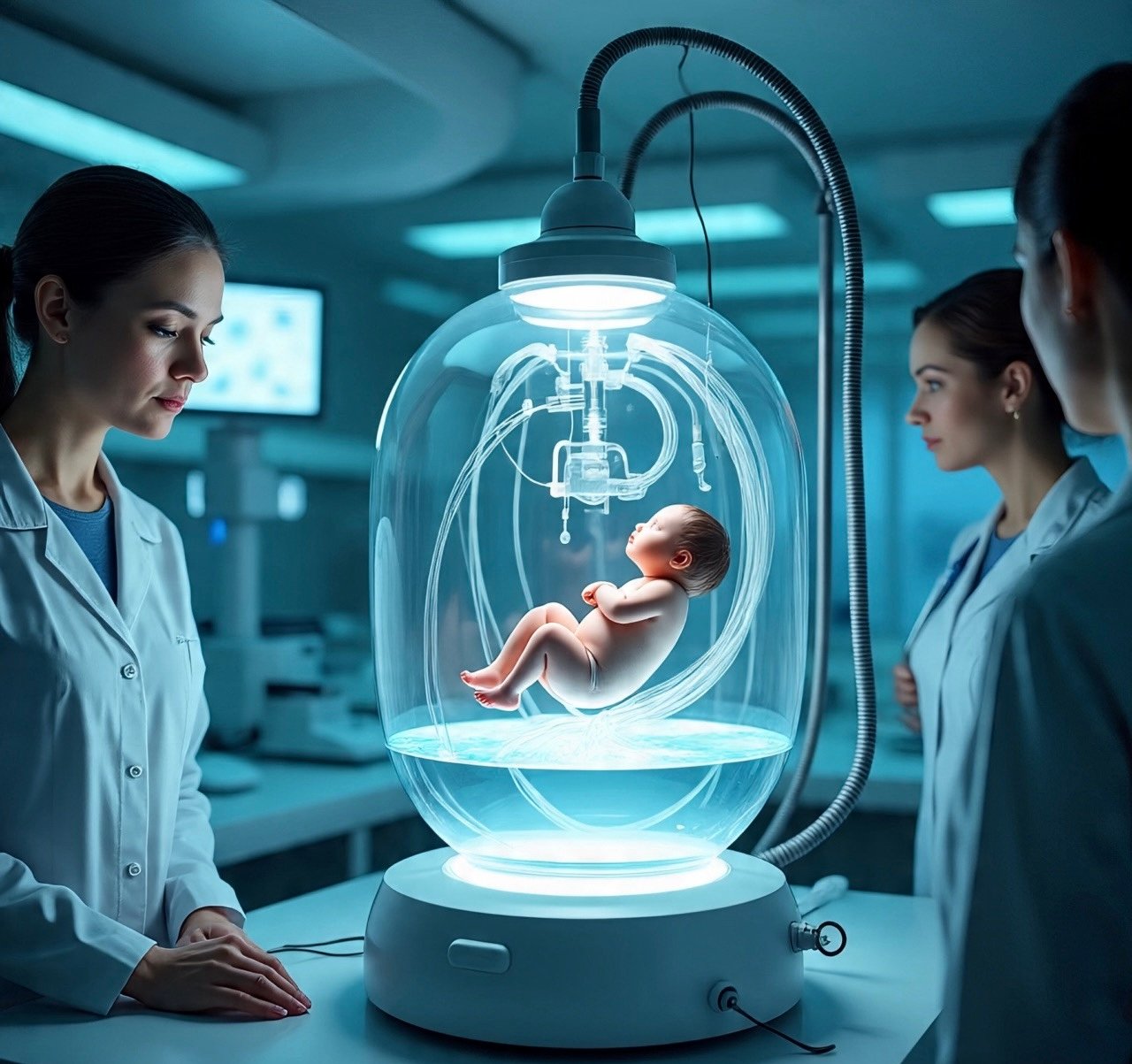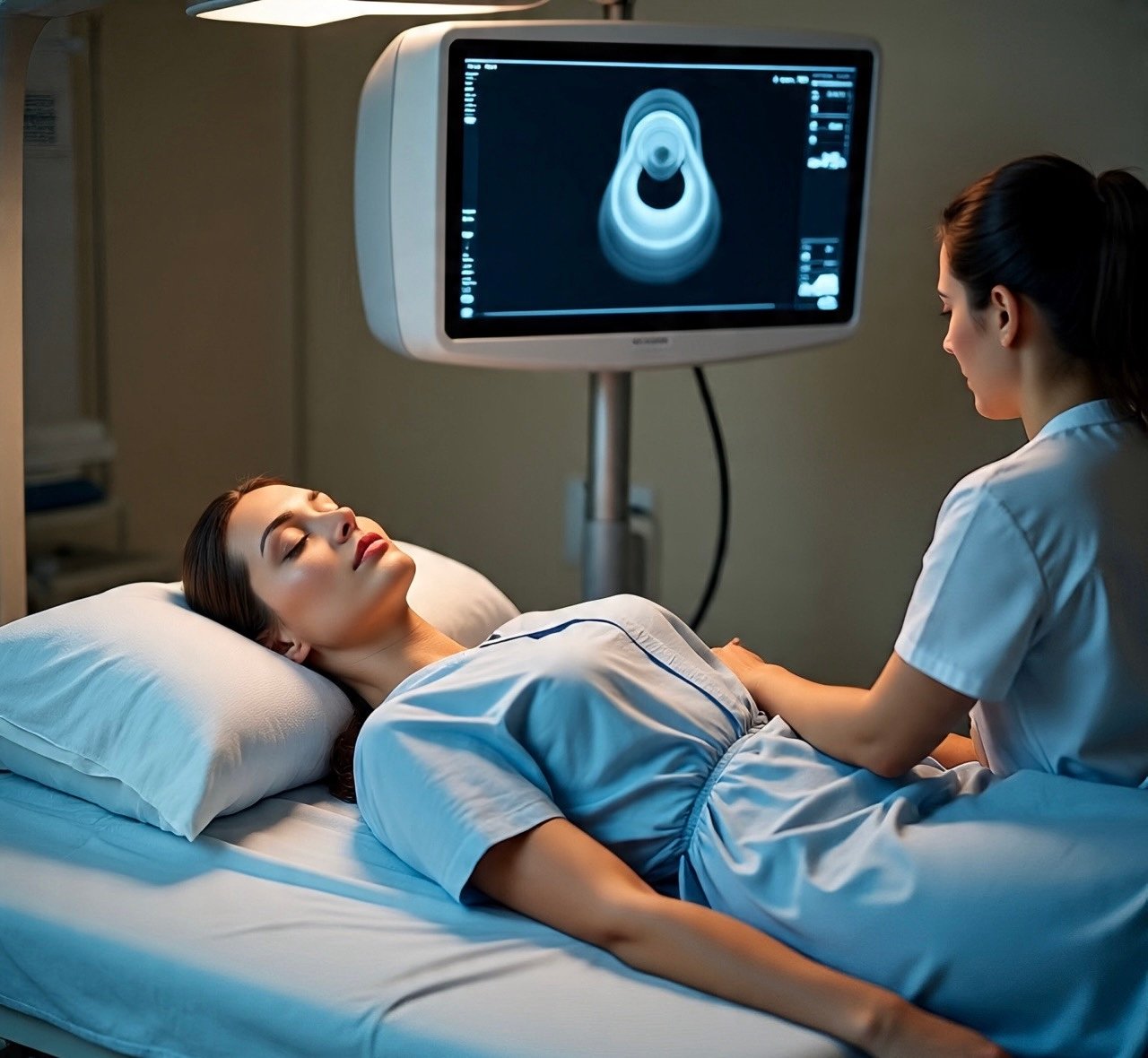Imagine a world where babies grow outside the human body. This concept, once confined to science fiction, is now closer to reality.
Kaiwa Technology, a Chinese company led by Dr. Zhang Qifeng, is developing the world’s first gestation robot. This innovation is designed to carry a human pregnancy to full term, offering both scientific hope and ethical unease.
For families unable to conceive, artificial wombs could be a breakthrough. Yet, for many others, this raises profound questions about parenthood, society, and what it means to be human.
Inside the Artificial Womb: How It Works
At its core, the artificial womb is a synthetic chamber that mimics natural pregnancy. According to Dr. Zhang, the system is already approaching maturity.
- The fetus develops inside a fluid-filled bag, similar to the 2017 “biobag” that sustained premature lambs.
- Oxygen and nutrients flow through an artificial umbilical cord, replicating the mother’s natural role.
- Gestation lasts around ten months, mirroring natural pregnancy but under controlled conditions.
- Unlike earlier prototypes, this design aims to complete an entire pregnancy cycle — from fertilization to birth.
This makes it different from neonatal incubators, which only support premature infants. Instead, it attempts to replicate the entire journey of human life inside a machine.
Why China Is Driving This Race
China’s push for artificial wombs is no coincidence. The nation faces a severe demographic crisis:
- The birth rate is falling rapidly, with fewer young couples choosing to have children.
- High housing and education costs make parenting less attractive.
- Millions of couples struggle with infertility, further shrinking population growth.
Artificial wombs, therefore, are seen not only as a medical solution but also as a population strategy. By lowering biological barriers to childbirth, China hopes to counter its aging workforce and declining fertility.
Cheaper Than Surrogacy: The Cost Factor
Kaiwa Technology expects to release a prototype by 2026. The projected cost is about 100,000 yuan (≈ $14,000) — far lower than surrogacy, which often exceeds $100,000 globally.
The company also envisions integrating the artificial womb into humanoid robots. These machines could eventually simulate natural pregnancy more closely. However, details about embryo implantation and fertilization remain undisclosed, fueling both curiosity and skepticism.
Ethics on the Edge: “The End of Women”?
The possibility of machines carrying pregnancies is sparking heated debate worldwide.
- Critics warn of the commodification of childbirth, erosion of maternal bonds, and potential misuse by authoritarian states.
- Some feminists argue this could signal “the end of women,” reducing their biological role in society.
- Medical experts caution that pregnancy is not purely biological — it is also emotional, social, and cultural.
- Supporters counter that artificial wombs could save lives, reduce maternal mortality, and give hope to couples unable to conceive.
This divide underscores the tension between technological progress and human tradition.
Regulation: Law Struggles to Keep Up
Dr. Zhang confirmed ongoing discussions with Guangdong authorities to establish regulations. However, multiple unanswered questions remain:
- Who are the legal parents of a machine-born child?
- What happens if the machine fails mid-gestation?
- Could there be black markets for artificial births?
- Should access be limited to medical cases, or open to anyone?
Technology is advancing faster than law, leaving regulators scrambling to create rules before misuse becomes inevitable.
Redefining Parenthood in the Machine Age
For some, the artificial womb is a technological miracle. For others, it is a philosophical threat.
If machines can create life, what does it mean to be human? Does motherhood lose its essence, or does it simply evolve?
These questions reveal how gestation robots are not only scientific inventions but also cultural disruptions.
Global Perspectives: Will the World Accept This?
Acceptance of artificial wombs will likely differ across regions:
- In Japan, South Korea, and Europe, facing falling birth rates, governments may explore this as a demographic solution.
- In wealthier Western countries, it could become an alternative to surrogacy.
- In religious or conservative societies, strong opposition is likely, as reproduction is tied to spiritual and cultural traditions.
This suggests that artificial wombs are not only a technological challenge but also a global cultural debate.
Q&A: The Future of Artificial Wombs
Q: How does an artificial womb work?
A: It uses a fluid chamber, artificial umbilical cord, and controlled nutrient flow to simulate natural pregnancy.
Q: When will this technology be ready?
A: A prototype is expected by 2026, though clinical adoption may take longer.
Q: Who benefits most?
A: Infertile couples, women unable to carry pregnancies, and nations facing declining birth rates.
Q: What risks exist?
A: Malfunction, emotional detachment, legal conflicts, and potential misuse for commercial or political purposes.
Q: Could this replace natural pregnancy?
A: Experts believe it will complement, not replace, motherhood — serving specific needs rather than becoming the norm.
FAQs: Quick Insights
Will artificial wombs reduce maternal mortality?
Yes, by avoiding dangerous pregnancies, but they cannot replace the social role of women in childbirth.
Are they legal anywhere?
Not yet. Regulations are being discussed in China, but most countries lack legal frameworks.
Could this promote gender equality?
Possibly. It could free women from pregnancy risks but may also create new ethical and social inequalities.
Conclusion: Between Science and Humanity
Artificial wombs may become one of the most disruptive technologies in history. They offer hope to millions yet demand answers to unsettling questions.
As China leads the race, the world must decide:
Should machines carry life?
Who controls reproduction when robots are involved?
And most importantly — how far should humanity go in outsourcing the very essence of creation?




